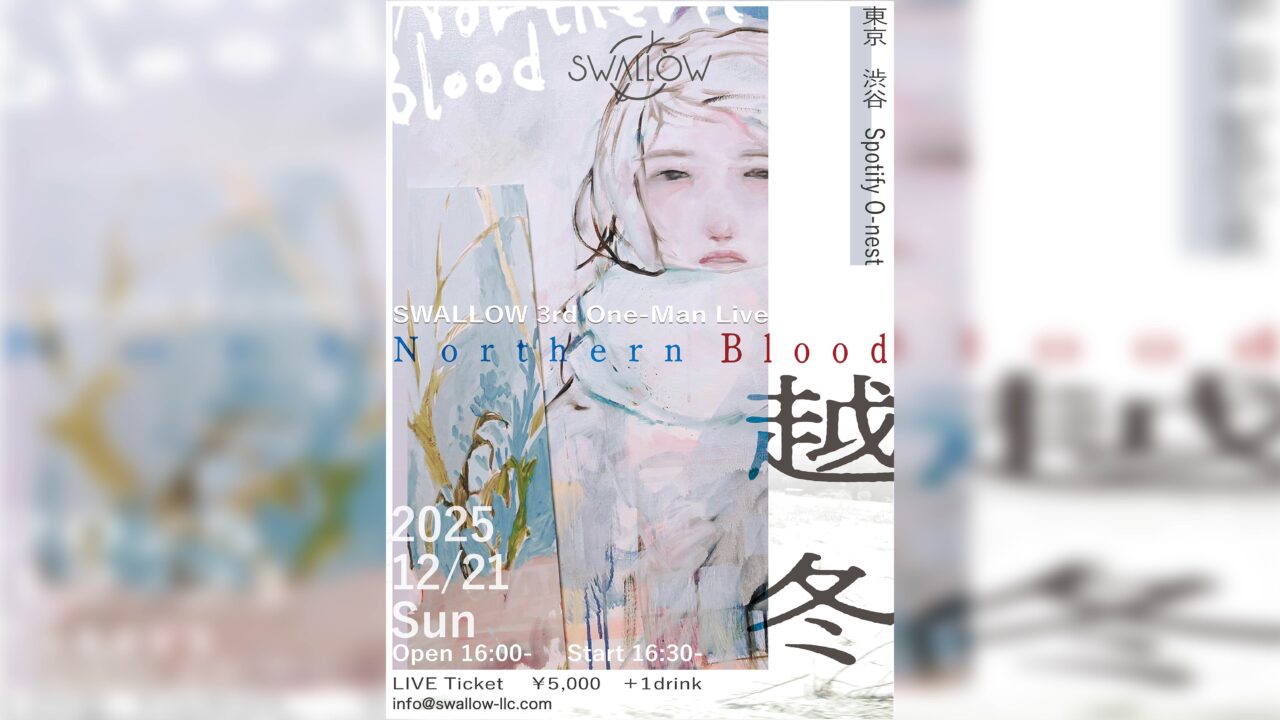INDEX
Interaction through creative work
Do the two of you ever hang out together in private?
Kato: We have drinks in Jimbocho and Asakusa, and also in Tomakomai. We had Kuwashima-san come to Tomakomai to shoot the main visual for “FAHDAY.

Kuwajima: About halfway through the second day, I met up with Kato and we had a drink together. I was very happy with the offer for “FAHDAY,” but the order was, “Please shoot what you want to destroy in Tomakomai, Mr. Kuwashima! [laughs]. It was January when we shot the film, and I had just gotten divorced, so I was depressed as hell. That’s why the content was so dark [laughs].
Kato: I was like a driver and we just quietly took pictures together, but on the last day we were driving along a mountain road, dragonflies were hanging out in one place. I wondered what it was, but I found a dead deer. It was below freezing, so it had not rotted, and it was still in a very clean state. Mr. Kuwashima was taking pictures of it with great enthusiasm, and I was looking at them thinking that I would never be able to use them in “FAHDAY” [laughs].

Kuwajima: I think that things that are concrete but you don’t know why they were taken are ultimately abstract. So I kept taking pictures of things like stains on the wall, cracks, and things that made me wonder, “What is this? I kept taking pictures of things that I thought “what is this?
Like the order for the main visual, you are quite conceptual, aren’t you, Kato? Whether it is an event or artwork, I feel like you always have a clear idea of what you are going to do because you have this kind of intention.
Kato: I don’t like to do random trial and error. When I decide to do something this time, I make a logical plan that can be explained from 1 to 10. It’s the same when I make music, like if I mix this and that, it will be like this. If we had this reverb in this era, it would have this texture because it is definitely not digital,” or “If we had this kind of budget for this project, it would sound like this,” or something like that. Sometimes the result is “it’s not right,” but in that case, I try to present it as “it’s not right. I have a rule that I don’t reverse my initial hypothesis and pretend that the result is the same as the original one.
Kuwajima: When you make a song with the intention of making an album, there may be songs that fall through the cracks. Do any of the songs fall out?
Kato: There are quite a few. I think that song would be a great song, but I can’t do it now. Dimen” is made up of only such songs, and there are not many new songs that I wrote.
Kato: I have a lot of fragments in my voice memos, so I just think about how I can cross them with each other. I wonder what I could do to make it interesting. But I don’t like to be like, “I’m going to do something weird! I don’t like to do weird stuff. I don’t like to do weird stuff. I like to put in experimental free jazz-like chiming, or to say that I’m doing a dance-like interpretation, only to have it be four beats per minute. Then the number of choices dwindles, and I think, “Isn’t there anyone who sings in a normal way now? I think, “Isn’t that what nobody is doing nowadays? I compose music in that kind of gimmicky industrial style.




























